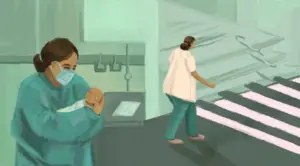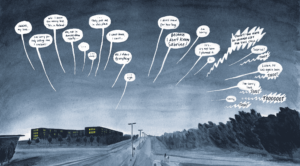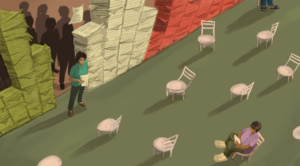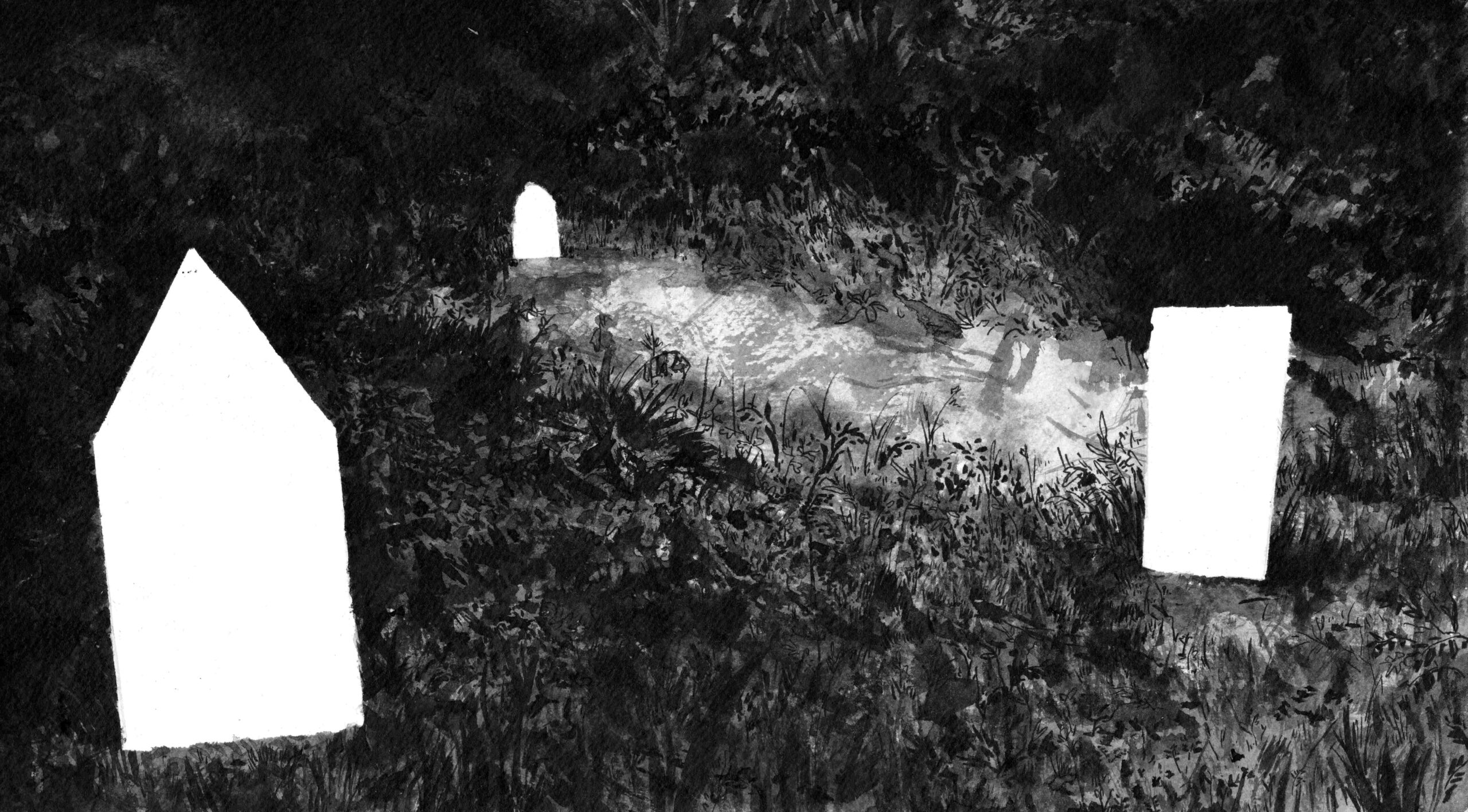
Unmarked monuments of EU’s shame in Croatia and Bosnia
- Written by Barbara Matejčić
- Illustration by Antoine Bouraly
- Translation by Ivana Pogačić Vale
- Edited by Tina Lee
- Photos by Tina Xu
Read this article in Croatian in Telegram.
In the village of Siče in eastern Croatia, there are more inhabitants in the cemetery than among the living. The village has 230 living residents, and 250 dead. To be more precise, the cemetery is home to 247 locals and three unknown persons. There would be more people six feet under if Siče hadn’t gotten its own cemetery only in the 1970s. There would also be even more of the living if they hadn’t, like many from that region, gone to bigger cities in search of a better life. Abroad as well, mainly to Germany.
The graves of Siče’s inhabitants briefly tell the visitor who these people were, where they belong, and whether their loved ones care for them. That’s the thing with graves, they summarise the basic information of our life.
If the grave bears only the inscription “NN”, that summarises a tragedy.
Who are these three people whose names are unknown? How come their last resting place is a plain grave in Siče?
Even if you didn’t know, it’s clear that those three people don’t belong there.
They have been buried completely separated from the rest of the cemetery. Three wooden crosses with NN inscriptions, stuck in the ground at the edge of the cemetery. NN, an abbreviation of the Latin nomen nescio, literally means, “I do not know the name.” The official explanation from the public burial ground operator is that space has been left for more possible burials of those whose names are not known. However, the explanation that springs to mind when you get there is that they were buried separately so they wouldn’t mix with the locals. Or as the mayor of another town, where NN migrants have also been buried at the edge of the cemetery, let slip in a telephone conversation, “So that they’re not in the way.”
At the cemetery in Siče, these are the only three graves that no one takes care of. In about five years, all trace of them could disappear. The public burial ground operator is obliged to bury unidentified bodies, but not to maintain graves unless the grave belongs to a person of “special historical and social significance.”
NN1, NN2 and NN3 are of special significance only to their loved ones, who probably don’t even know where they are. Maybe they are waiting to finally hear from them from Western Europe. Maybe they’re looking for them. Maybe they mourn them.
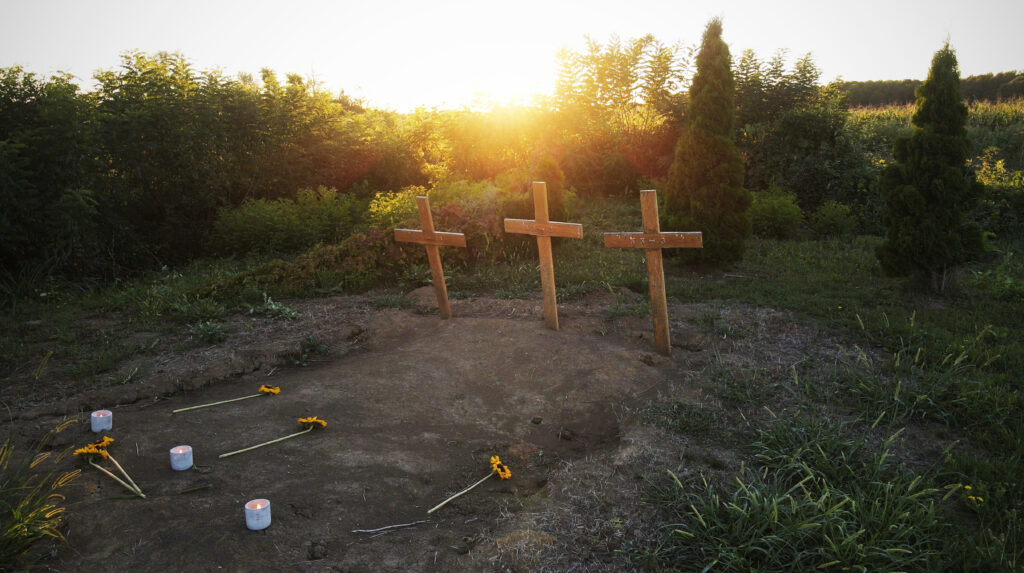
Identities known but buried as unknown
If you do dig a little deeper, you will learn a thing or two about those who rest here nameless.
In the early, cold morning of December 23, 2022, the police found two bodies on the banks of the Sava, the river that separates Croatia from Bosnia and Herzegovina. It separates the European Union from the rest of Europe. According to the police report, they also found a group of twenty foreign citizens who illegally entered Croatia via the river. The group was missing one more person. After an extensive search, a third body was found in the afternoon. The pathologist of the General Hospital in the town of Nova Gradiška established the time of death for all three people as 2:45 A.M. Two died of hypothermia, one drowned.
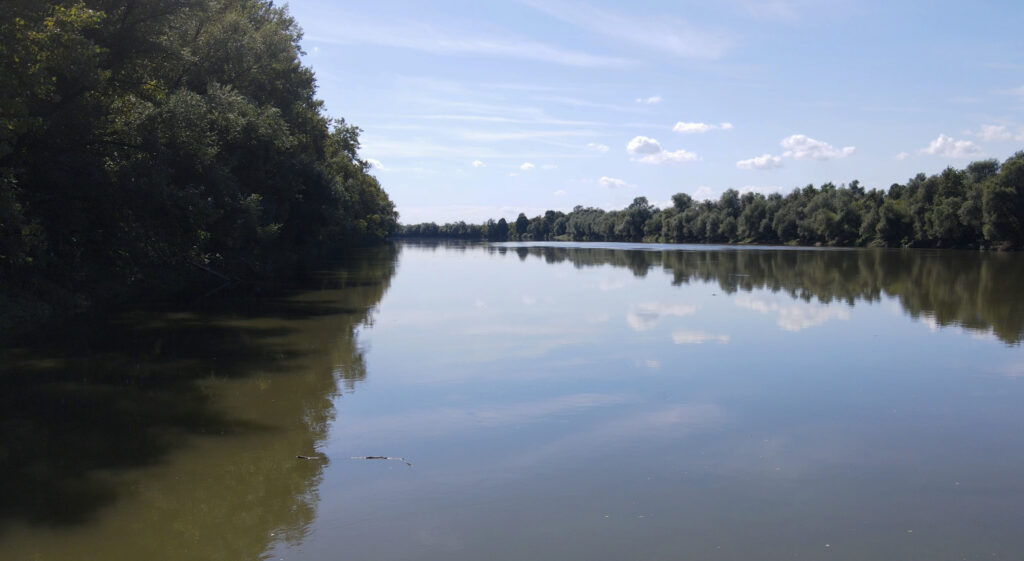
Identity cards from a refugee camp in Bosnia and Herzegovina were found on them. We learned that, according to their IDs, all three were from Afghanistan: Ahmedi Abozari was 17 years old, Basir Naseri was 21 years old and Shakir Atoin was 25 years old. NN1, NN2 and NN3.
Other migrants from the group also confirmed the identity of two of them, as the Brodsko-Posavska County police administration told us. Then why were they buried as NN? If it was known that they were from Afghanistan, why were they buried under crosses? If families are looking for them, how will they find them?
The cemetery management was kind and said that they perform burials according to what is written in the burial permit signed by the pathologist – and it said NN.
The pathologist said that he enters the data based on the information he receives from the police.
The competent police department told us that the person is buried according to the rules of the local municipality.
Siče cemetery belongs to the municipality of Nova Kapela, whose mayor, Ivan Šmit, discontentedly listed all the costs that his municipality incurred for those burials and said that whoever is willing to pay for it can change the NN inscription into names.
We came across a series of similar administrative ambiguities while investigating how authorities deal with the deceased people they recover at EU borders as a part of the Border Graves Investigation carried out by a team of eight freelancers from across Europe together with Unbias the News, The Guardian and Süddeutsche Zeitung.
There is no centralised European database on the number of migrants’ graves in Europe.
But the team managed to confirm the existence of at least 1,931 migrants’ graves in Greece, Italy, Spain, Croatia, Malta, Poland and France, dating from 2014 to 2023. Of these, 1,015 were unidentified. More than half of the unidentified graves are in Greece, 551, in Italy 248, and in Spain 109. The data were obtained based on the databases of international organizations, non-governmental organizations, scientists, local authorities and cemeteries, and field visits.
The team visited 24 cemeteries in Greece, Spain, Italy, Croatia, Poland and Lithuania, where there are a total of 555 graves of unidentified migrants in the last decade, from 2014 to 2023.
These are only those whose bodies have been found. The International Committee of the Red Cross (ICRC) estimates that more than 93% of those who go missing on Europe’s borders are never found.
Families lost in bureaucracy
December 2022, when the three young Afghans died, was rainier than usual and the Sava River swelled. It is big and fast to begin with.
In that area, just three days earlier, five Turkish citizens went missing after their boat overturned on the Sava. Among them were a two-year-old girl, a twelve-year-old boy and their parents. The brother of the missing father came from Germany to Croatia to find out what happened to the family. From the documentation, which we have in our possession, it is evident that with the help of translator Nina Rajković, he tried to get information about his missing relatives from several police stations. Even months later, he hasn’t received any updates.
The two had wanted to file a missing person’s report, but the police told them that there was no point in doing so if the person had not previously been registered in the territory of Croatia or Bosnia and Herzegovina.
We encountered a number of similar examples. A young man had come to Croatia and reported to the police in both Croatia and Slovenia that his brother had drowned in the Kupa River that separates the two countries. However, his brother’s disappearance was not recorded in the Croatian national database of missing persons, which is publicly available. The police did not contact him after several unidentified bodies were found in the Kupa in the following days.
In another example, an Afghan man waited six months for the body of his brother, who drowned when they tried to cross the Sava together, also in December 2022, to be transferred from Croatia to Bosnia and Herzegovina so that he could bury him. Although he had confirmed that it was his brother, the identification process was lengthy and complicated.
There are numerous families who tried from afar to track down their loved ones who had disappeared in the territory of Croatia, only to finally give up in discouragement.
There are many questions and few clear answers when it comes to the issue of missing and dead migrants on the so-called Balkan Route, of which Croatia is a part. There are no clear protocols and procedures defining to whom and how to report a missing person. It is not known whether missing migrants are actively searched for, as tourists are when they disappear in the summer. It is not clear how much and which information is needed for identification.
“The circulation of information between institutions and individual departments seems almost non-existent to me."
Marijana Hameršak
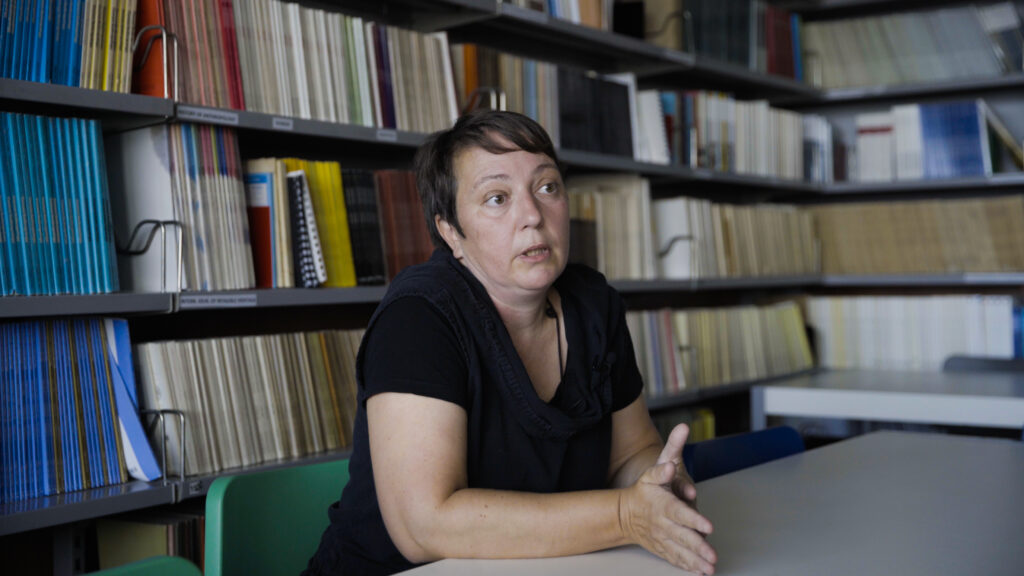
“In one case, it took me more than two months and dozens of phone calls and emails to different addresses, police stations, police departments, hospitals, and the state attorney’s office, just to prompt the initiation of identification, which to this day, more than a year later, has not been completed,” says Marijana Hameršak, activist and head of the project “European Regime of Irregular Migration on the Periphery of the EU” of the Institute of Ethnology and Folklore Research in Zagreb, which collects knowledge and data on missing and dead migrants.
Searches for missing migrants and attempts to identify the dead in Croatia, as well as in neighbouring Bosnia and Herzegovina, most often rely on the efforts of volunteers and activists, who, like Marijana, untiringly search for information in the chaotic administration because families who do not know the language find this task practically insurmountable.
"Die or make your dream come true"
The Facebook group “Dead and Missing in the Balkans” became the central place to exchange photos and information about the missing and the dead between families and activists.
The competent Ministry of the Interior does not have a website in English with an address where one can write from Afghanistan or Syria and inquire about the fate of loved ones, leave information about them, and report them missing. There is also no regional database on missing and dead migrants on which the police administrations would cooperate, not even the ones from the countries where the most crossings are recorded – from Bosnia and Herzegovina to Croatia.
In an interview with our team, Dunja Mijatović, the Council of Europe Commissioner for Human Rights, emphasised that the creation of a centralised European database of missing and dead migrants is extremely important. If such a database combined ante-mortem and post-mortem data on the deceased, the chances of identification would greatly increase.
"Families have a right to know the truth about the fate of their loved ones."
Dunja Mijatović, Council of Europe Commissioner for Human Rights
Yet, police cooperation in keeping the EU’s external border impervious is effective.
Previously, people attempting to migrate did not try to cross the Sava so often. They knew it was too dangerous. They share information with each other and do not venture across such a river in children’s inflatable boats or inner tubes. Unless they are utterly desperate. With pushbacks and the use of force, which many organisations like Amnesty International and Human Rights Watch have been warning about for years, the Croatian police made it difficult to cross at other, less dangerous points along the Croatian border, which is the longest external land border in the European Union. As a young Moroccan in Bosnia and Herzegovina who tried to cross the border to Croatia 11 times but was pushed back by the Croatian police each time told us, “You have two choices: die or make your dream come true.”
It is difficult to determine how many died on the Balkan Route in an attempt to fulfil their dream. The most comprehensive data for ex-Yugoslav countries is collected by the researchers of the “European Regime of Irregular Migration on the Periphery of the EU (ERIM)” project. It records 346 victims from 2014 to 2023 in Croatia, Bosnia and Herzegovina, Serbia, Slovenia, North Macedonia and Kosovo. Each entry in ERIM’s database is individual and contains as much data as the researchers managed to collect, and they use all available sources – media reports, witnesses, official statistics, activist channels. But the figure is certainly significantly higher. Some who went missing were never even registered anywhere.
Many bodies were never found. For example, another common border crossing, the Stara Planina mountain range between Bulgaria and Serbia, is a rough and inaccessible terrain. Only those who have been driven to this route by the same fate will come across the bodies, and they will not risk encountering authorities to report it.
If people die in the minefields remaining from the wars in Croatia and Bosnia and Herzegovina, there will not be much left of their bodies. Most bodies were found drowned in rivers, but there is no estimate of how many who drowned were never reported missing, or were never found.
The Croatian Ministry of the Interior provided us with data on migrants who have died in Croatia since 2015, when records began to be kept, until the end of November 2023: according to the data, a total of 87 migrants died on the territory of the Republic of Croatia. To put it more precisely: that’s how many bodies were found in Croatia. Not a single official body in Croatia, Bosnia and Herzegovina and Serbia keeps records of migrants buried in that territory.
However, we managed to obtain data for Croatia, thanks to inquiries sent to over 500 addresses of cities, municipalities and municipal companies that manage cemeteries. According to the data obtained, there are 59 graves of migrants in 32 cemeteries in Croatia who were buried in the last decade, namely from 2014 until September 2023. Of these, 45 have not been identified. The Ministry of the Interior says that since 2001, DNA samples have been taken from all unidentified bodies. We asked the Ministry to allow us to talk with experts who work on the identification of migrants, but we were not approved.
Some of the buried were exhumed and returned to their families in their country of origin, although this is a demanding and extremely expensive process for the families.
The burden of not knowing
Among the NN graves is a stillborn baby from Syria buried in 2015 in the town of Slavonski Brod. A five-year-old girl who drowned in the Danube was buried in Dalje in 2021. Last summer, a young man died of exhaustion in the highlands in the Dubrovnik area. Some were hit by a train. Many died of hypothermia. Some die because they were not provided medical help early enough. Some don’t believe anything can help them, so they committed suicide.
According to the law, they are buried closest to the place of death, which are mostly small cemeteries, such as the one in Siče. Often, just like in that village, their graves are separated from the rest of the cemetery. In some places, like in Otok, one of the tender-hearted local women has given herself the task of taking care of the NN grave. In others, like the cemetery in Prilišće, the NN wooden cross from 2019 has already rotted.
Each of these NN graves leaves behind loved ones who bear the burden of not knowing what happened. In psychology, this is called ambiguous loss, which means that as long as relatives do not have confirmation that their loved ones are dead, and as long as they do not know where their bodies are, they cannot mourn them.
If they go on with their lives, they feel guilty. And so they remain frozen in a state between despair and hope. American psychologist Dr. Pauline Boss is the author of the concept and theory of “ambiguous loss.”
“A grave is so important because it helps to say goodbye,“ she said in an interview for our investigation.
There are also practical consequences of this frozen state: succession rights cannot be carried out, bank accounts cannot be accessed, family pensions cannot be obtained, the partner cannot remarry, and custody of children is complicated.
Many families in Croatia and Bosnia and Herzegovina know ambiguous loss very well. Both countries went through war in the 1990s that left thousands of people missing.
Both countries have special laws on the missing in those wars and well-developed mechanisms of search, identification, data storage and mutual cooperation. But this does not apply to migrants who vanish and die among the thousands who are on the move along the Balkan Route.
Croatia responsible for death of a child
Croatia became an important point of entry into the European Union after Hungary closed its borders in September 2015. From then until March 2016, it is estimated that around 660,000 refugees passed through the Croatian section of the Balkan corridor – the interstate, organised route. This corridor allowed them to get from Greece to Western Europe in two or three days. Most importantly, their journey was safe.
Of these hundreds of thousands of people on the move, the Croatian Ministry of the Interior did not record a single death in 2015 and 2016.
The corridor was established to prevent casualties after a large number of refugees died on the railway in Macedonia in the spring of 2015. However, with the conclusion of the EU-Turkey refugee agreement in March 2016, the corridor closed. The EU committed to generously funding Turkey to keep refugees on its territory, so that they do not come to the European Union. And so the perilous, informal Balkan Route remained the only option. Many take it. In the first ten months of 2023 alone, the Croatian police recorded 62,452 actions related to illegal border crossings.
Both the Croatian Ombudswoman Tena Šimonović Einwalter and Council of Europe Human Rights Commissioner Dunja Mijatović warn of the same thing: border and migration policies have a clear impact on the risk of migrants going missing or die. It is necessary to establish legal and safe migration routes in the EU.
However, the EU expects Croatia to protect its external border, and Croatia is doing so wholeheartedly. Croatian Minister of the Interior Davor Božinović calls such practices “techniques of discouragement” and says they are fully in line with the EU Schengen Border Code.
The result of such practices is, for example, the death of Madina Hussiny. The six-year-old girl from Afghanistan was struck by a train and killed after Croatian police “discouraged” her and her family away from the Croatian border and told them to follow train tracks back to Serbia in the middle of the night in 2017. The European Court of Human Rights ruled in November 2021 that Croatia was responsible for Madina’s death.
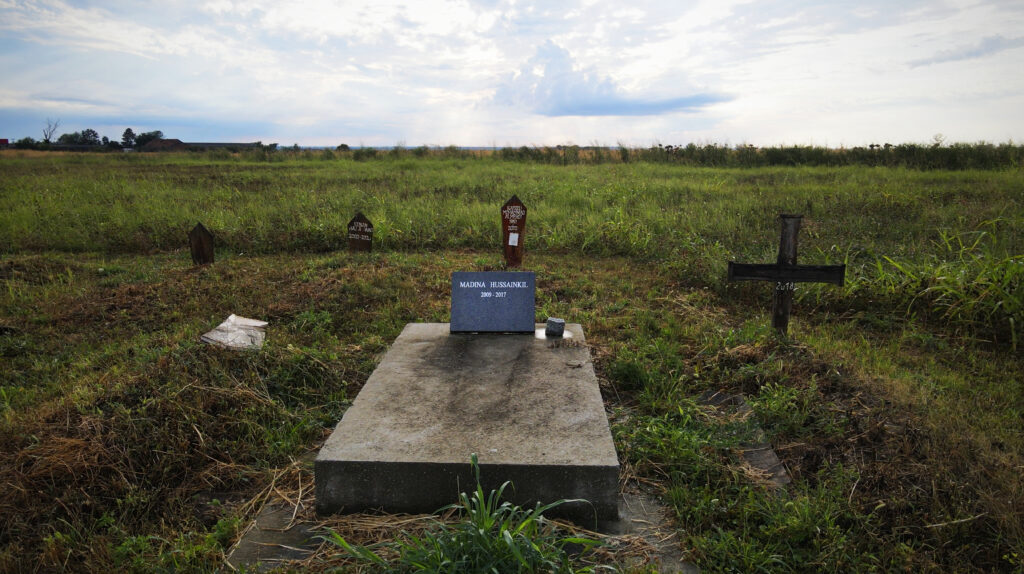
In a typical “discouragement,” Croatian police transport people to points along the border and order them to cross. In the testimonies we heard, as well as in many reports of non-governmental organisations, people described having to wade or swim across rivers, climb over rocks or make their way through dense forest. They often cross at night, sometimes stripped naked, and without knowing the way because the police usually take away their mobile phones.
Up to 80% of all pushbacks by Croatian police may be impacted by one or more forms of violence, indicates data collected by Border Violence Monitoring Network in 2019. That means that thousands were victims of border violence.
According to data collected by the Danish Refugee Council, in the two-year period from the beginning of 2020 to the end of 2022, at least 30,000 people were pushed back to Bosnia and Herzegovina.
"While trying to reach Europe"
Among them is Arat Semiullah from Afghanistan. In November 2022, he intended to cross the Sava River and enter Croatia from Bosnia. He was 20 years old. He drowned and was buried at the Orthodox cemetery in Banja Luka. His family in Afghanistan did not know what happened to him. He had sent his mom a selfie with a fresh haircut for entering the European Union and then he stopped answering.
The mother begged her nephew Payman Sediqi, who lives in Germany, to try to find him. Payman got in touch with the activist Nihad Suljić, who voluntarily helps families find out what happened to their loved ones in Bosnia and Herzegovina. They spent weeks trying to get information. Payman travelled to Bosnia and managed to find his relative thanks to the helpfulness of a policewoman who showed him forensic photographs. Arat’s mom confirmed by phone that it was her son.
Arat’s obituary published in Bosnia and Herzegovina said that “Croatian police sank the boat using firearms, and he tragically drowned.” With the help of the Muslim community, and at the request of the family, his body was transferred to the Muslim cemetery in the village of Kamičani. The family wanted to bury him in Afghanistan, but it was too expensive and bureaucratically complicated.
In September 2023, we met with Nihad and Payman when a large tombstone was erected for Arat. It says, “Drowned in the Sava River while trying to reach Europe.” Payman told us that Arat was crossing the Sava with a group of others trying to enter Europe. Some of them managed to cross over to the Croatian side, but then the Croatian police shot at the rubber boat Arat was in. The boat sank and Arat drowned. That’s what a survivor who crossed over to the Croatian bank of the Sava told Payman. Payman says that Arat’s family is in great pain, but at least they know where their son is and that he was buried according to their religious customs. It is important to Payman that his relative’s grave says he died as a migrant.

“People die every day in Europe, fleeing countries where there is no life for them. Their dreams are buried in Europe. No one cares about them, not even when European policemen shoot at them,” Payman says.
Payman knows what kind of dreams he’s talking about. He himself came to Germany illegally at the age of 16. He says he was lucky.
Nihad advocates that other graves of migrants in Bosnia and Herzegovina also be permanently marked as such. He takes us to the cemetery in the town of Zvornik, where 17 NN migrants are buried. Nihad says he was informed that some of them had their passport on them when they were found. From the cemetery, you can see the river Drina, which separates Serbia from Bosnia and where many lives have been lost during crossing attempts. About 30 bodies were found in the Drina this year alone. Nihad says that they are lucky if they wash up on the Bosnian riverbanks, because in Serbia the authorities often do not perform autopsies nor take DNA samples. This was confirmed to us by activists from Serbia. In those cases, they are forever and completely lost to their families.
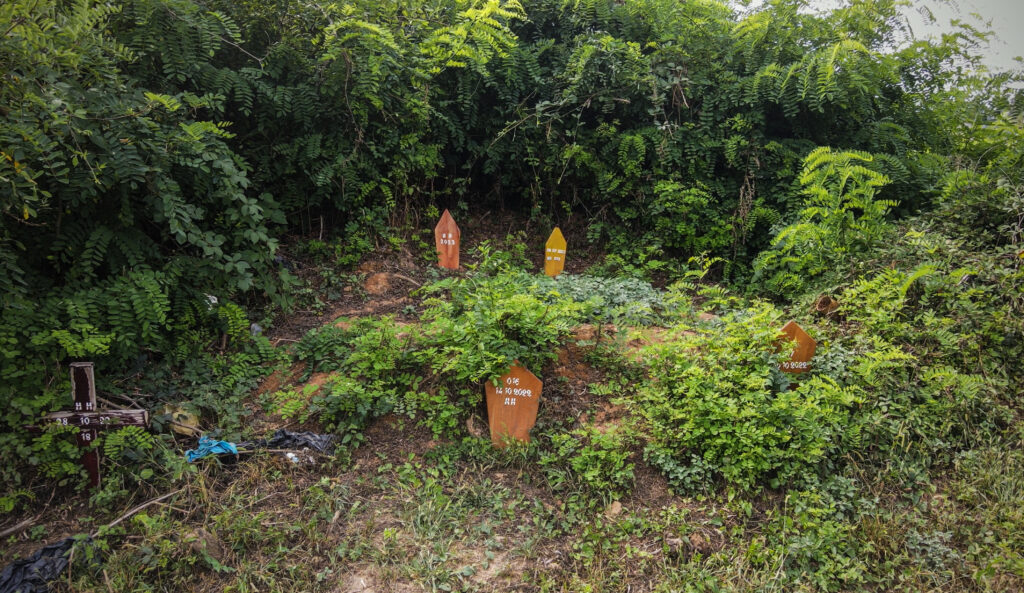
The earthen NN graves in Zvornik are overgrown and not demarcated, so you wouldn’t know if you are stepping on them. Nihad managed to convince the Town of Zvornik to replace the wooden signs with black stone. It is important to him that they are buried with dignity, but he also finds it important that they stand there as a memorial.
“My wish is that even 100 years from now these graves stand as monuments of the EU’s shame. Because it was not the river that killed these people, but the EU border regime,” Nihad says.
About the author:
Barbara Matejčić is a Croatian award-winning freelance journalist and non-fiction writer focused on social affairs and human rights.
About the investigation:
This article is part of the Border Graves Investigation, made in collaboration with The Guardian and Süddeutsche Zeitung. The Border Graves Investigation team consists of Barbara Matejčić, Daphne Tolis, Danai Maragoudaki, Eoghan Gilmartin, Gabriela Ramirez, Gabriele Cruciata, Leah Pattem, and is coordinated by Tina Xu. This investigation was supported by Investigative Journalism for Europe and Journalismfund Europe. Additional support by Limelight Foundation.
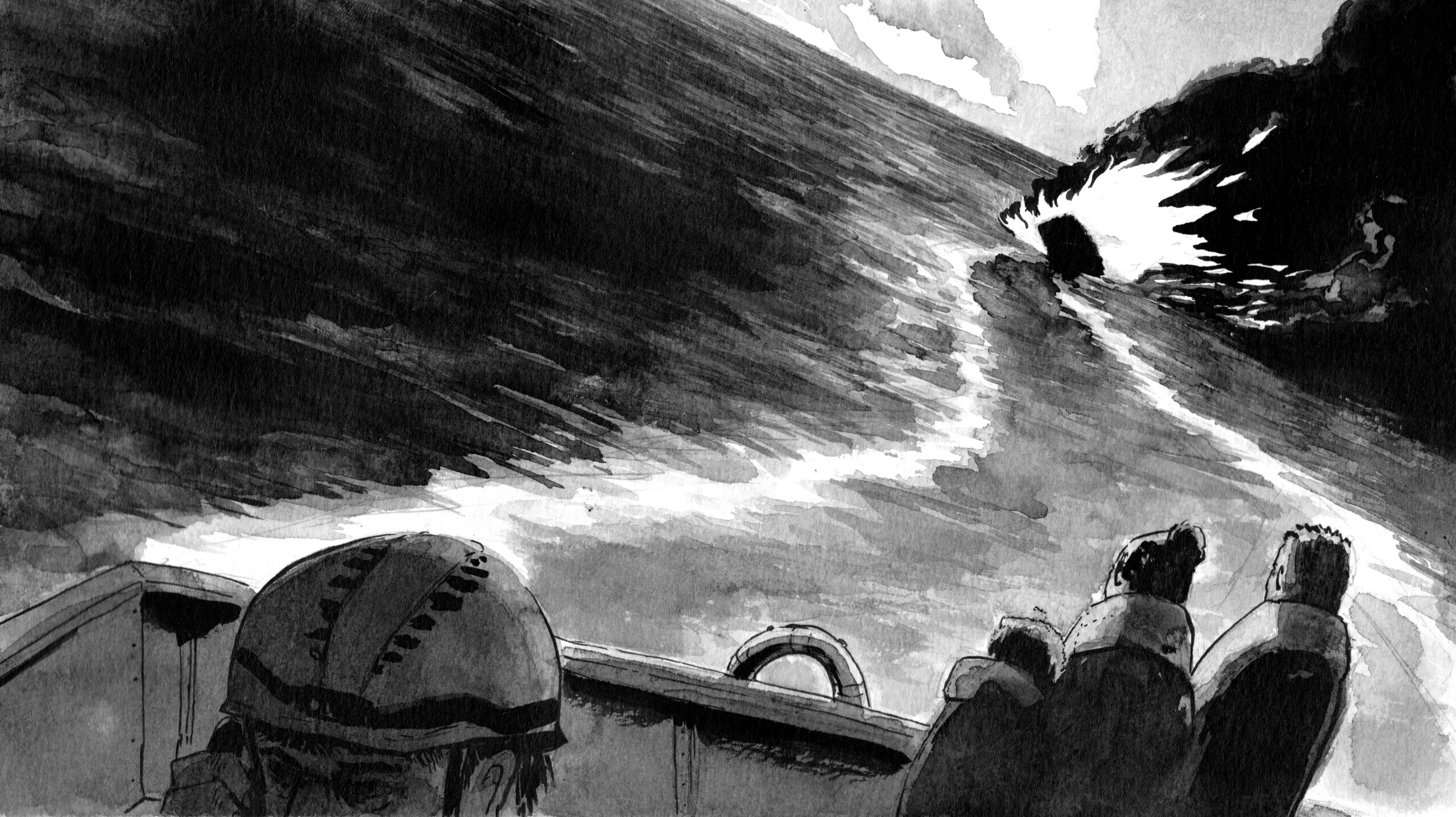
From 2013 to the present, Refaat has searched everywhere for their children. For ten years he has been traveling, asking, and searching. He has even appeared on TV hoping one day to be reunited with them. But to this day he still does not know if his children were saved or if they are two of the 268 victims of the October 11, 2013 shipwreck, one of the worst Mediterranean disasters in the last three decades.
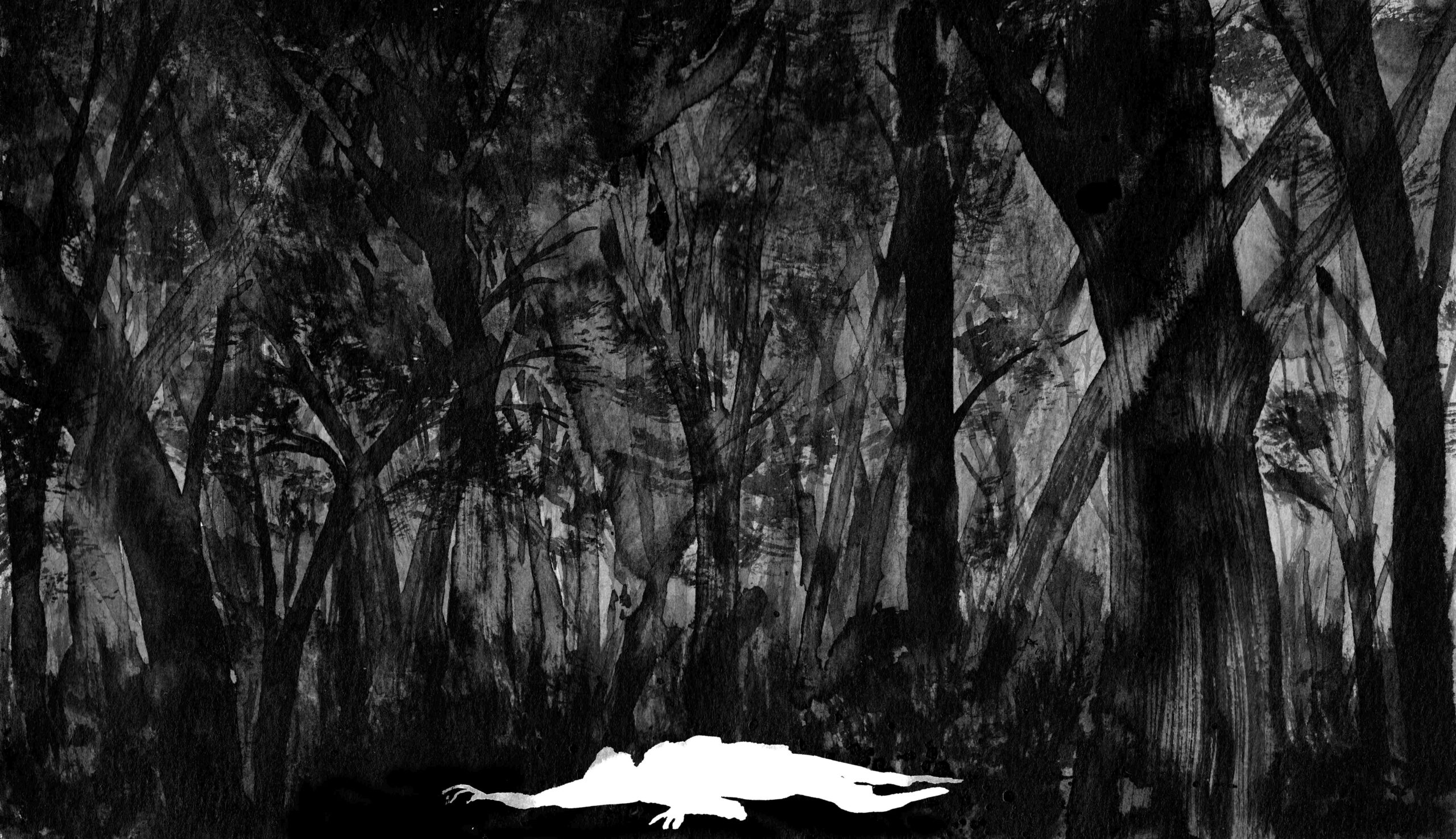
It was already dark when Samrin was left alone in the woods. He had no backpack, sleeping bag, or food. His phone was running out of battery. The next morning, Samrin came online briefly to send Sanooja a final message on WhatsApp: “No water, I think I’ll die. Trangam, I love you.”

“My wish is that even 100 years from now these graves stand as monuments of the EU’s shame. Because it was not the river that killed these people, but the EU border regime.”
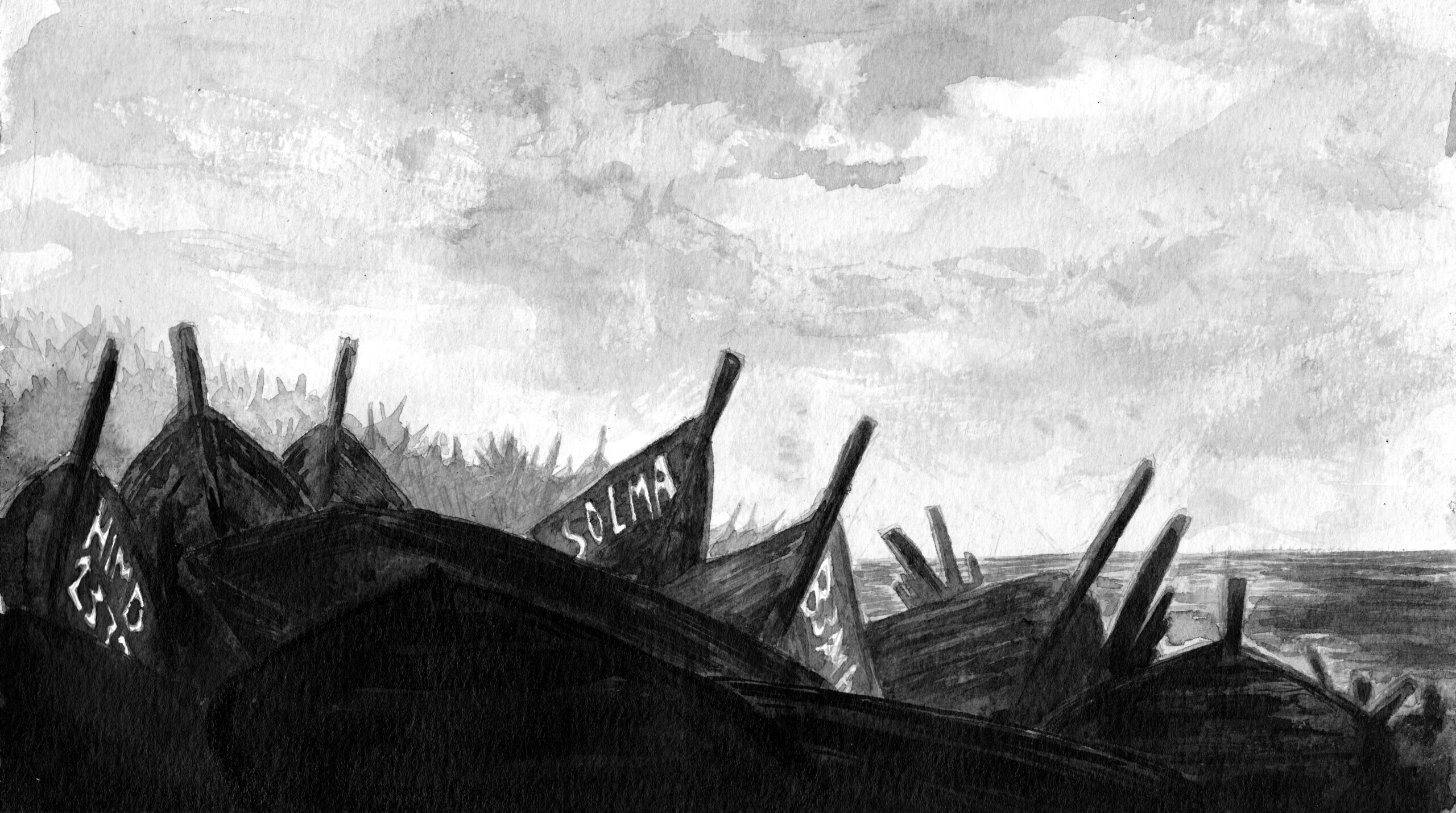
No one ever comes to visit, but on days when there are funerals here and flowers are about to be thrown out, I place them on the tombs containing the unknown migrants,” he explains. “In some of the older graves, you have the remains of up to five or six migrants together, each placed in separate sacks within the same niche to save space.”
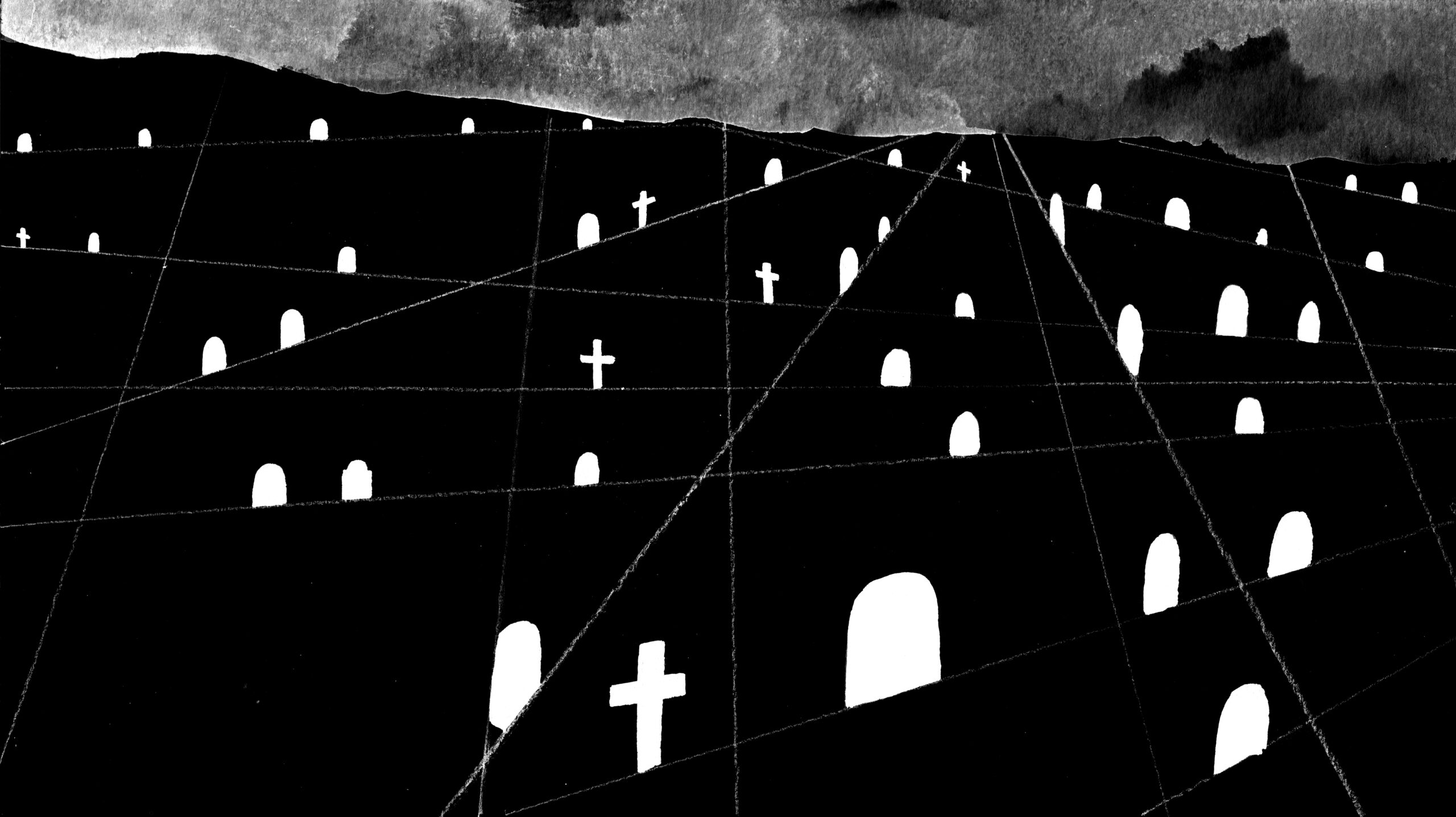
Latsoudi recalls something a refugee had mentioned to her in 2015: ‘The worst thing that can happen to us is to die somewhere far away and have no one at our funeral’.

